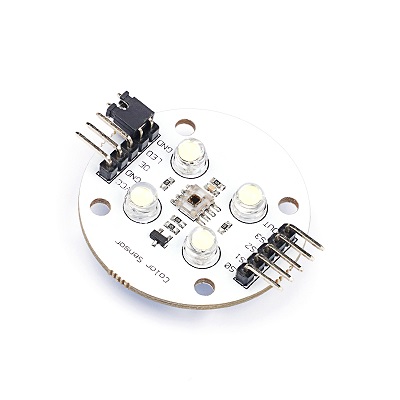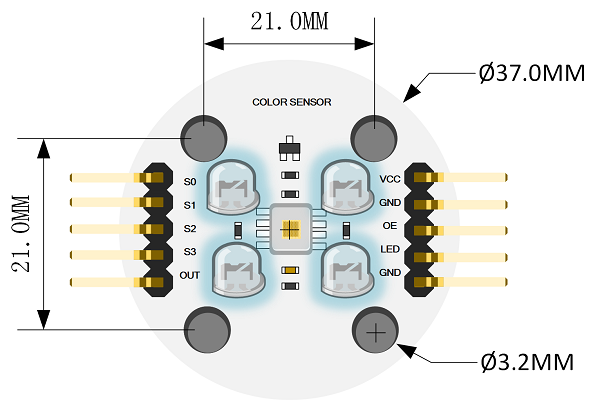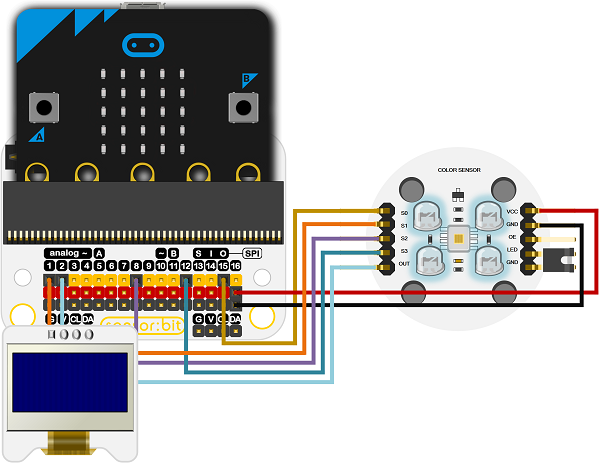Color Sensor Module(EF03047)
Contents
2. Color Sensor Module(EF03047)#
2.1. Introduction#
Based on TCS3200, the Color sensor module is a programmable color light-to-frequency converter, it could filter RGB data from source light and convert it to a square wave(50% duty cycle) with frequency directly proportional to light intensity (irradiance). The full-scale output frequency can be scaled by one of three preset values via two control input pins(SO, S1 Selectable Options 2%, 20%, 100% frequency),and pin S2, S3 control the filter of RGB. Digital input and output allow interface to a microcontroller or other logic circuitry directly. Output enable (OE) places the output in the high-impedance state for multiple-unit sharing of a microcontroller input line. At last, user can calculate the color of the light by RGB values.

2.2. Characteristics#
High-resolution conversion of light intensity to frequency Programmable color and full-scale output frequency Communicating directly with a microcontroller Single-supply operation (2.7 V to 5.5 V) Nonlinearity error typically 0.2% at 50 kHz Stable 200 ppm/°C temperature coefficient
2.3. Parameter#
Name: Color Sensor Module SKU:EF03047 Working Voltage: DC 2.7~5.5V Connection Mode: G-GND,V-VCC,S-signal pins Size: 37.6 x 37.6mm Net Weight: 5.1g
2.4. Outlook and Dimmensions#

2.5. Quick to Start#
Hardware Connection#
Connect S0 to pin15, S1 to P1, S2 to P8, S3 to P12, OUT to P2, VCC to the Power Supply and GND to the GND. Then insert the micro:bit to Octopus:bit. Connect OLED to IIC port.

Software Programming#
Add extension library:https://github.com/DoraLC/pxt-tcs3200-color-sensor
Show RGB value to OLED.
Links: https://makecode.microbit.org/_JU5Dau19mE9c
You can also download it directly below:
Result#
The value of the current red, blue and green is displaying on the OLED screen.
2.6. FAQ#
Avoid the interference of outside light,testing the better in a confined space No special requirements for light, but try to focus on a single The first use or restart or change light and so on, please adjust the WB(White Balance)
